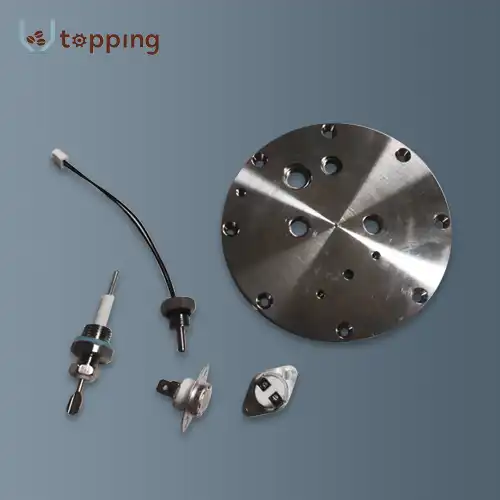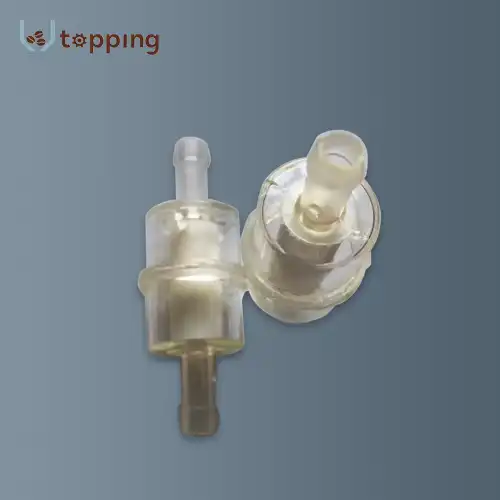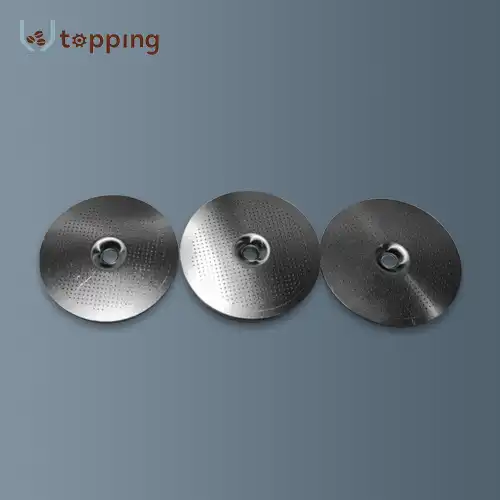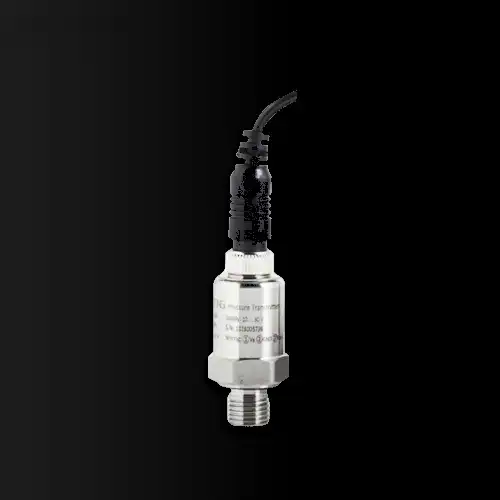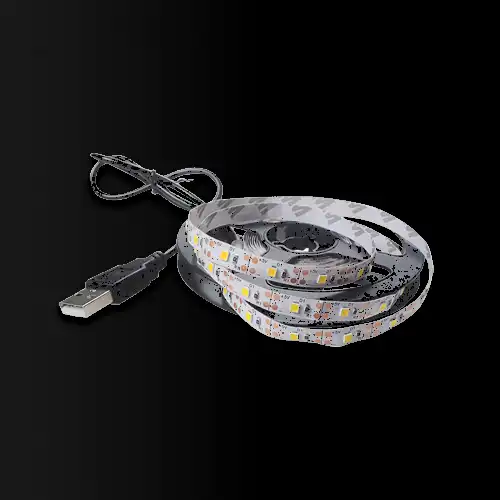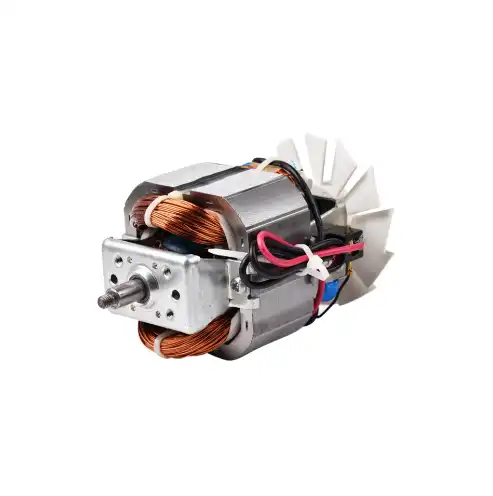How Much Coffee Beans to Put in a Hopper?
2024-07-25 15:46:52
How much espresso beans you put in your coffee bean hopper is significant with regards to making the best mug of espresso. As well as affecting the flavor and strength of your espresso, the amount of beans in your processor additionally affects how new it is and the way that well it works. This blog will discuss the factors to consider, the best practices for maintaining the freshness and nature of your beans, and the ideal quantity of espresso beans to place in a container.
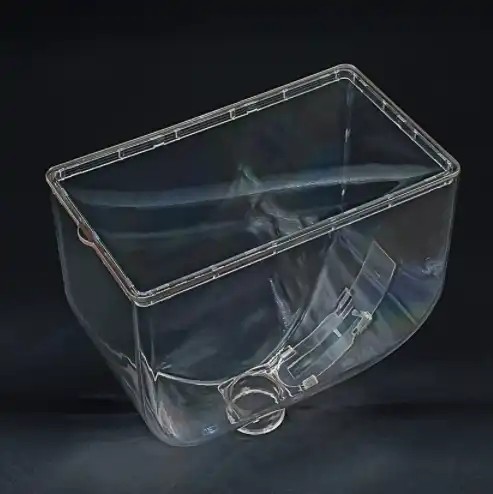
How Does Coffee Consumption Affect Bean Quantity?
The first factor to consider when determining how much coffee beans to put in the coffee bean hopper is your coffee consumption. If you brew multiple cups of coffee daily, you might be tempted to fill the hopper to its maximum capacity for convenience. However, this approach can compromise the freshness of your beans.
- Daily Usage: For those who consume a lot of coffee throughout the day, storing enough beans for one to two days is a good practice. This ensures that you have a ready supply of beans without exposing them to prolonged air and light, which can degrade their quality.
- Occasional Brewing:If you brew coffee less frequently, consider storing a smaller quantity in the hopper, just enough for each brewing session. This helps maintain the freshness and flavor of the beans.
How Does Hopper Size Influence Bean Storage?
Hoppers come in various sizes, and their capacity can significantly influence how much coffee beans you should store. The size of your hopper should match your coffee consumption to ensure optimal freshness and performance.
- Small Hoppers: Ideal for personal or low-usage scenarios, small hoppers usually hold enough beans for a few cups of coffee. This minimizes the exposure of beans to air and helps maintain their freshness.
- Large Hoppers: Suitable for commercial use or households with high coffee consumption, large hoppers can store a substantial amount of beans. However, it's essential to manage the quantity carefully to prevent staling.
How Do Environmental Factors Affect Bean Storage?
The amount of time coffee beans can remain fresh in the coffee bean hopper is significantly influenced by environmental factors like temperature, humidity, and light exposure.
- Temperature: Coffee beans should be kept somewhere cool and stable. The beans may lose their flavor and oils more quickly at high temperatures.
- Dampness: Over the top dampness can prompt shape development and corrupt the beans' quality. Keeping the container in a dry place is significant.
- Light Presence: Direct daylight or openness to light can speed up the staling system. This problem can be mitigated by using hoppers that are opaque or UV-protected.
What Are the Best Practices for Storing Coffee Beans?
To keep your coffee beans fresh and flavorful while stored in the hopper, consider the following best practices:
- Store Small Quantities: Only store the amount of beans you plan to use within a few days. This minimizes their exposure to air and light.
- Use Airtight Containers:For long-term storage, keep your beans in airtight containers and only transfer a small amount to the hopper as needed.
- Regular Cleaning: Clean the hopper regularly to remove any residual oils and coffee particles that can affect the flavor of your beans.
- Proper Placement: Place your coffee machine and hopper in a cool, dark location to reduce the impact of temperature fluctuations and light exposure.
How Does Bean Grinding Frequency Impact Freshness?
Grinding frequency also affects the freshness of coffee beans. Grinding beans just before brewing ensures maximum flavor and aroma.
- On-Demand Grinding: For the freshest coffee, grind beans on-demand. This means only grinding the amount you need for each brew. This approach ensures maximum freshness and flavor.
- Batch Grinding: If on-demand grinding is not feasible, batch grinding for a day's use can be a compromise. Store the grounds in an airtight container to preserve freshness.
How Do You Properly Clean a Coffee Bean Hopper?
Regular maintenance and cleaning of your coffee bean hopper are crucial for preserving the quality of your beans and the performance of your grinder.
1. Empty the Hopper: Remove any remaining beans.
2. Disassemble the Hopper: If possible, detach the hopper from the grinder.
3. Clean with Warm, Soapy Water:Use warm, soapy water to wash the hopper thoroughly. Avoid harsh chemicals that could damage the hopper material.
4. Rinse Thoroughly: Ensure all soap is rinsed away to prevent it from affecting the flavor of the beans.
5. Dry Completely: Allow the hopper to air dry completely before reassembling and refilling it.
Why is Freshness Important for Coffee Beans?
Newness is a basic element that impacts the flavor, smell, and generally nature of your espresso. As the beans are exposed to air, light, and other environmental factors, their rich, complex flavor profile diminishes over time.
- Flavor Profile: A cup of coffee made from fresh beans is flavorful and well-balanced. As beans age, they lose their oils and fragrance, bringing about a level and old taste.
- Aroma: A crucial aspect of the drinking experience is the aroma of coffee. New beans have areas of strength for a, fragrance that blurs as the beans old.
- Efficiency of Brewing: For consistent brewing and extraction, fresh beans must grind more evenly. Flat beans can bring about lopsided toil sizes, influencing the nature of your espresso.
What Are the Signs of Stale Coffee Beans?
Identifying stale coffee beans is essential to ensure you are brewing with fresh ingredients. Here are some signs that your coffee beans may have gone stale:
- Loss of Aroma:Fresh coffee beans have a strong, pleasant aroma. Stale beans will lack this characteristic smell.
- Flat Taste:Coffee brewed from stale beans will taste flat and lack the complexity of flavors that fresh beans offer.
- Oily Surface: Over time, oils from the beans can rise to the surface, creating a shiny appearance. While some oiliness is normal, excessive oil can indicate staleness.
- Dry and Brittle Beans: Fresh beans have a certain amount of moisture that gives them a slightly pliable texture. Stale beans can become dry and brittle.
How to Maximize Coffee Bean Freshness
To maximize the freshness of your coffee beans and ensure the best possible coffee experience, follow these tips:
- Buy Fresh Beans: Purchase coffee beans in small quantities to ensure they are used while still fresh.
- Check Roast Date: Look for the roast date on the packaging and choose beans that were roasted recently.
- Store Properly:Use airtight containers and store beans in a cool, dark place.
- Grind Just Before Brewing:Grinding beans just before brewing helps preserve their flavor and aroma.
Conclusion
While concluding the number of coffee beans to place in a coffee bean hopper, consider the normal components, how much coffee you drink, and the size of the compartment. By following best storage and maintenance practices, you can ensure that your beans stay fresh and that your coffee tastes great. Customary cleaning and appropriate situating of your coffee machine are fundamental to protect the kind of your beans and get the most ideal coffee.
References
1. Coffee Confidential. (2023). "Coffee Storage: Keeping Your Coffee Fresh." Retrieved from https://coffeeconfidential.org
2. Perfect Daily Grind. (2023). "How Long Do Coffee Beans Stay Fresh?" Retrieved from https://perfectdailygrind.com
3. Coffee Geek. (2023). "The Ultimate Guide to Coffee Bean Freshness." Retrieved from https://coffeegeek.com
4. Home Grounds. (2023). "Best Practices for Storing Coffee Beans." Retrieved from https://homegrounds.co
5. Serious Eats. (2023). "How to Store Coffee Beans to Keep Them Fresh." Retrieved from https://seriouseats.com
6. Sprudge. (2023). "The Science of Coffee Bean Storage." Retrieved from https://sprudge.com
7. Bean Box. (2023). "How to Store Coffee Beans: Tips for Freshness." Retrieved from https://beanbox.com
8. Blue Bottle Coffee. (2023). "Coffee Storage: What You Need to Know." Retrieved from https://bluebottlecoffee.com
9. Coffee Review. (2023). "Maximizing Coffee Freshness: Storage Tips." Retrieved from https://coffeereview.com
10. National Coffee Association USA. (2023). "How to Store Coffee Beans for Maximum Freshness." Retrieved from https://ncausa.org
Send Inquiry
Related Industry Knowledge
- Commercial Coffee Machine Spare Parts List
- What Types of Motors Are Used in Coffee Grinders?
- Advantage of vending machine touch screen in business
- Why is Hygiene Important in Vending Machine Cup Dispensers?
- How Long to Coffee Grinder Motors Last?
- How Do You Clean a Plastic Coffee Hopper?
- What is Mini Pcie?
- What Is Hopper Coffee?
- Can You Keep Coffee Beans in a Hopper?
- What measures does Vending Machine Camera take in terms of data security?

